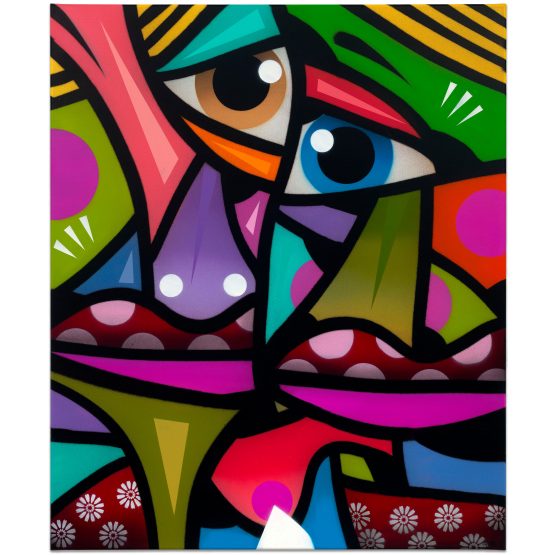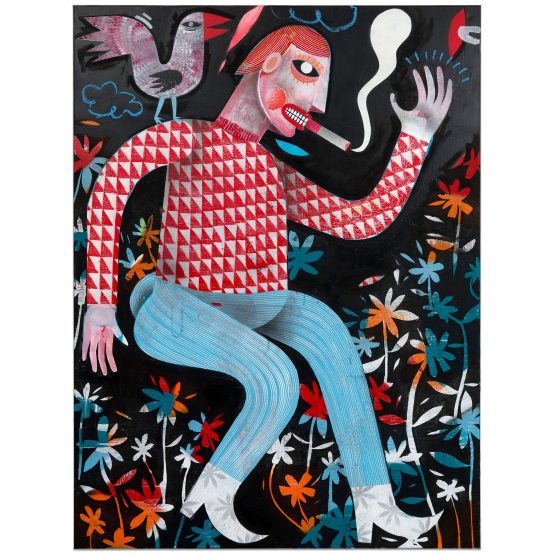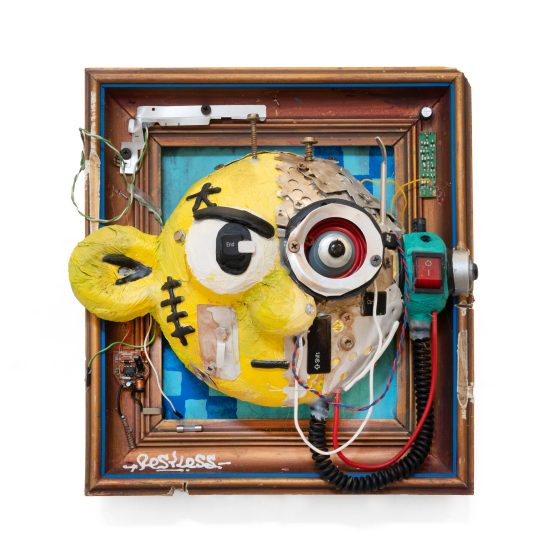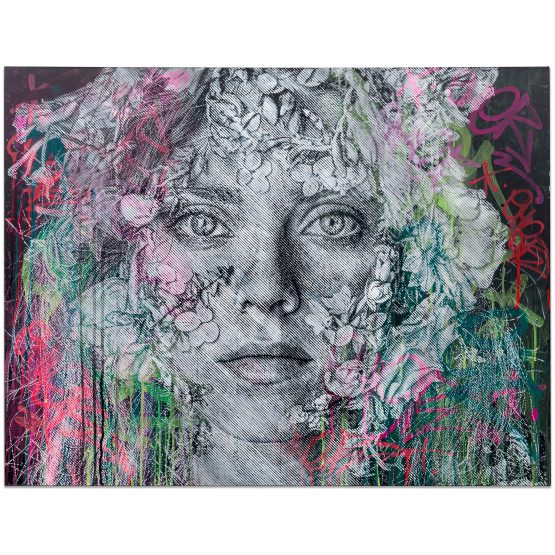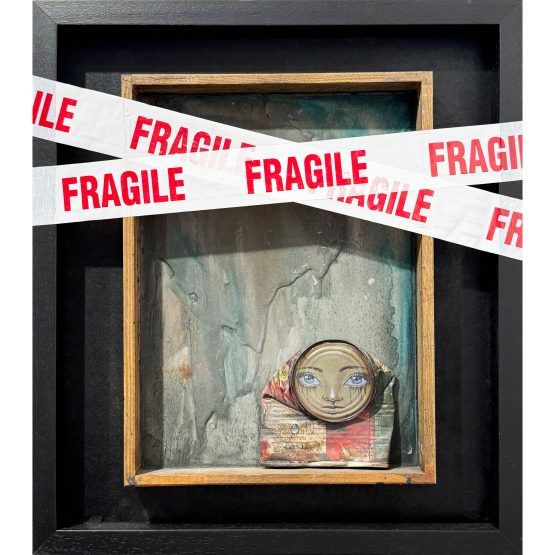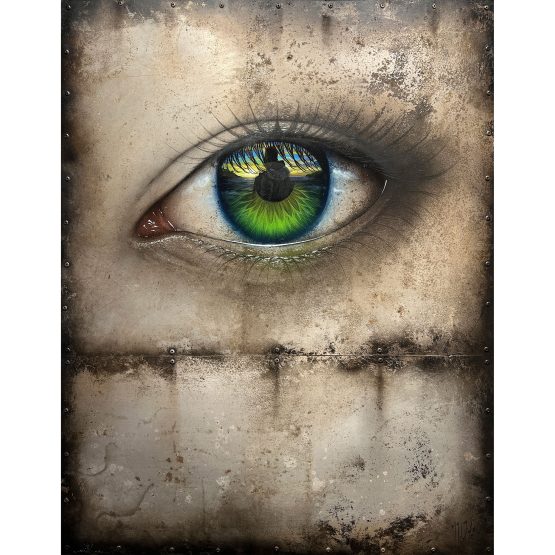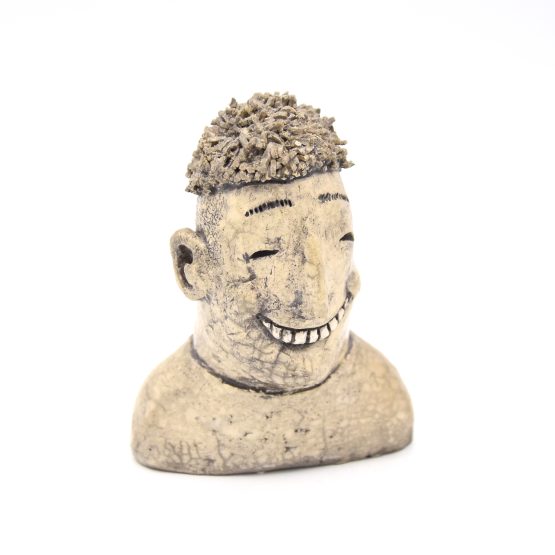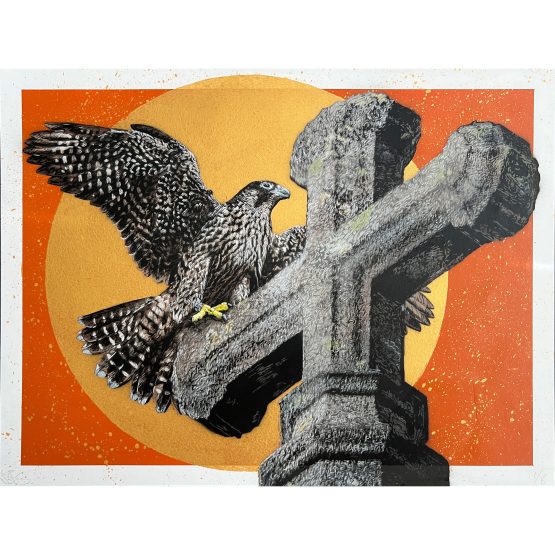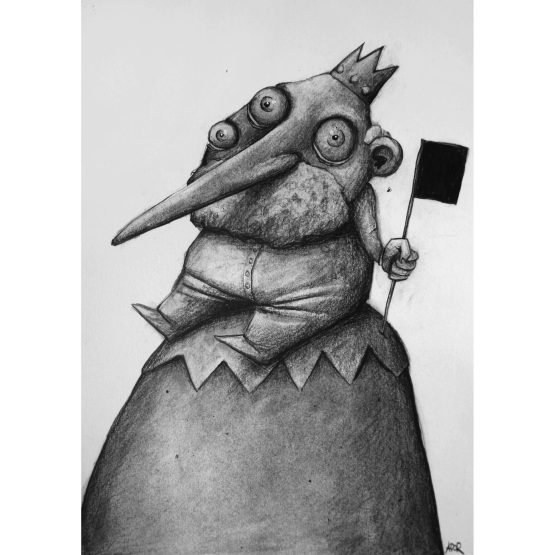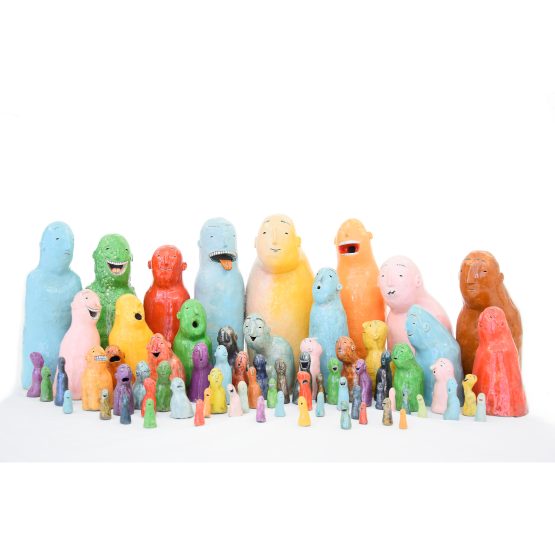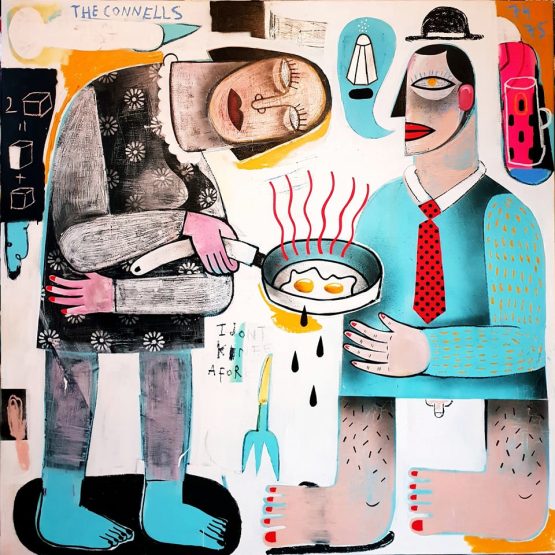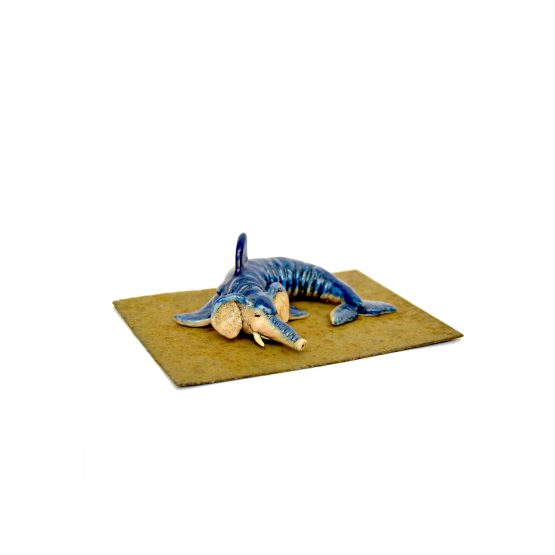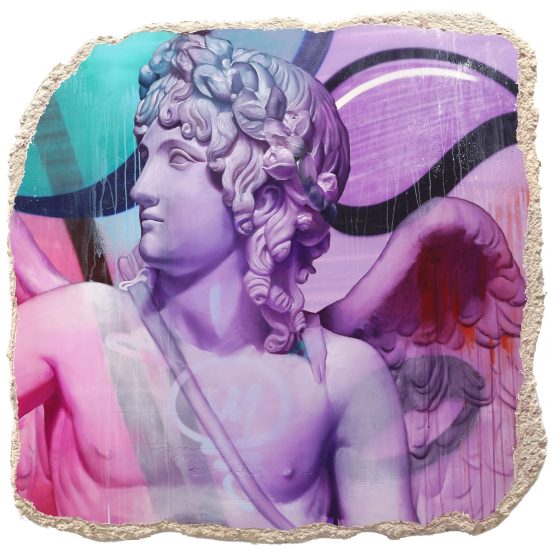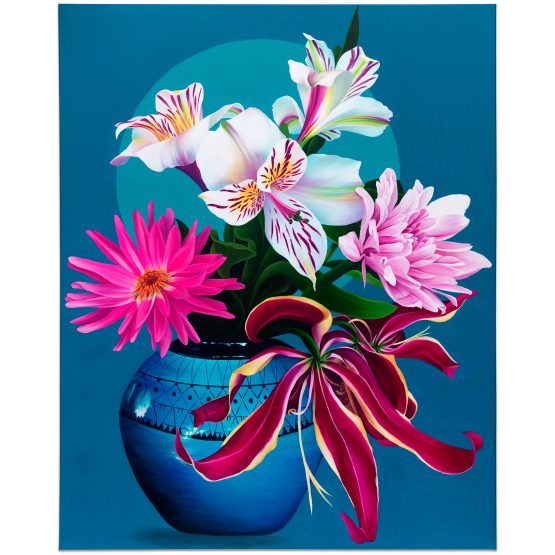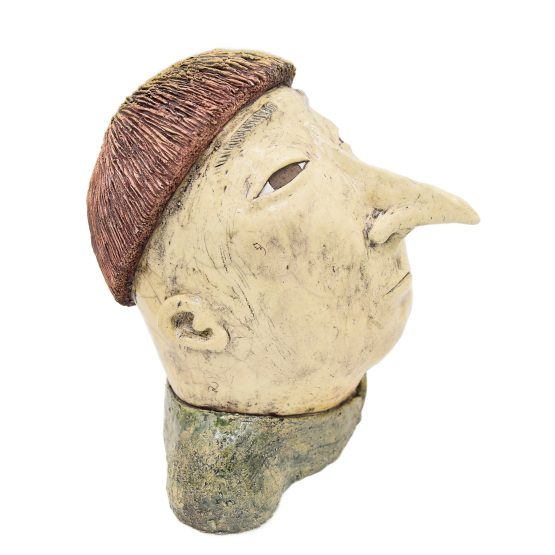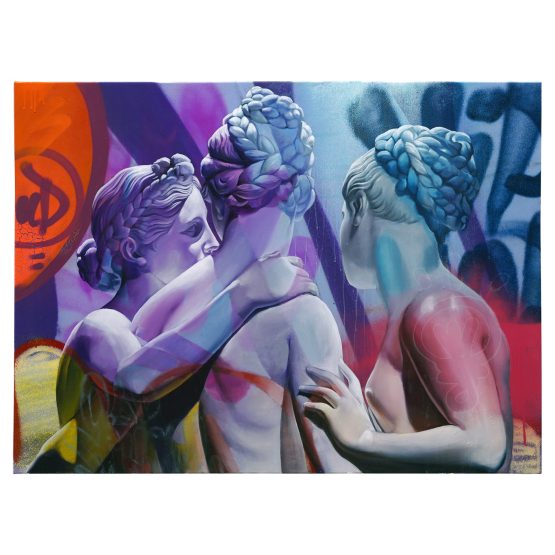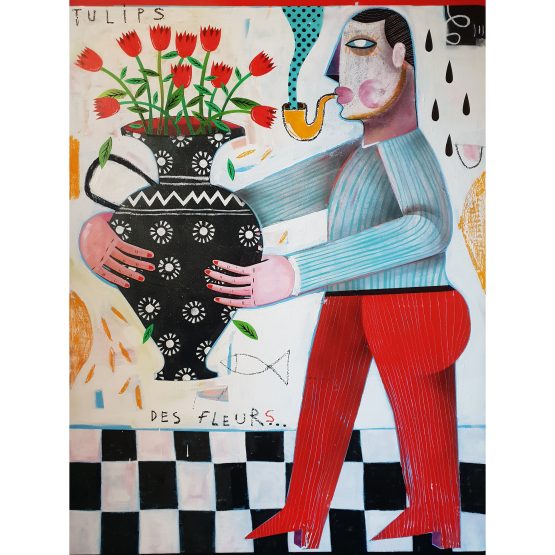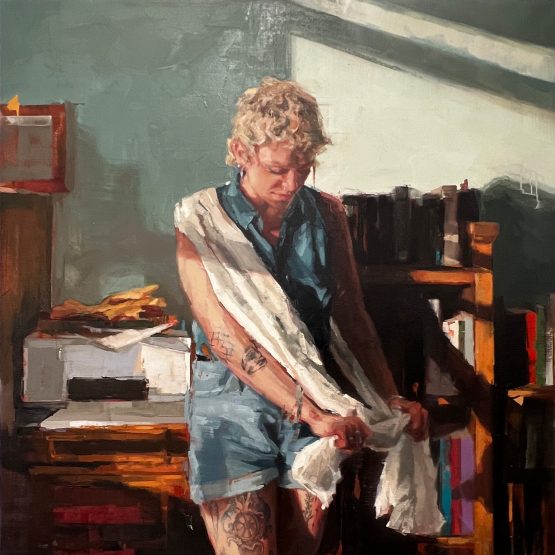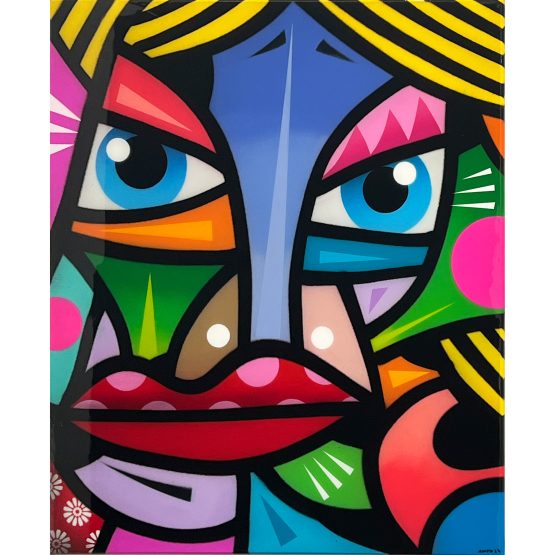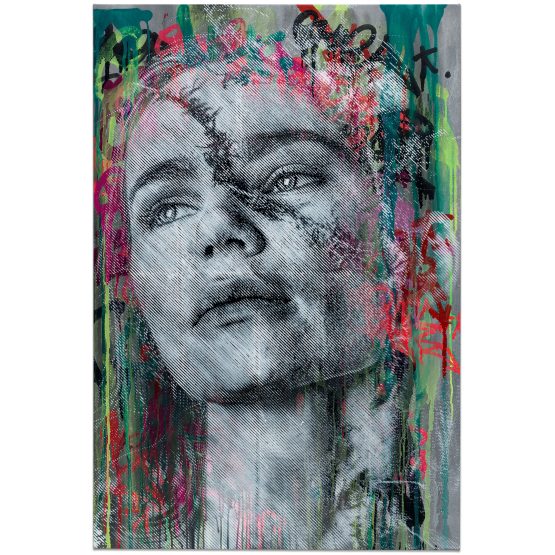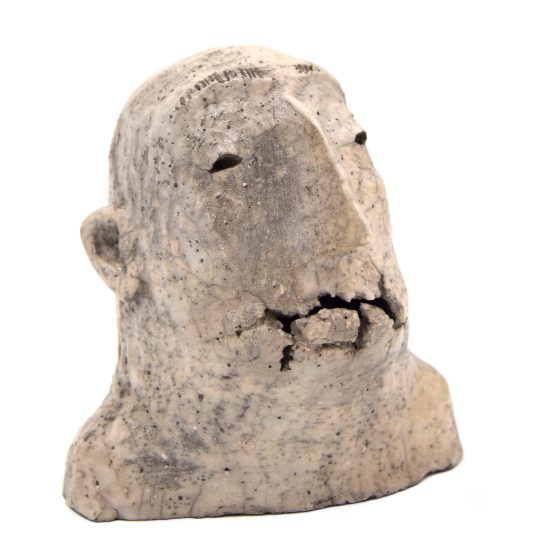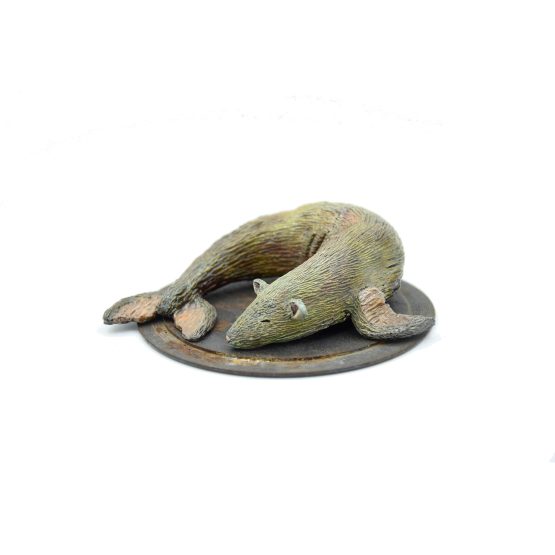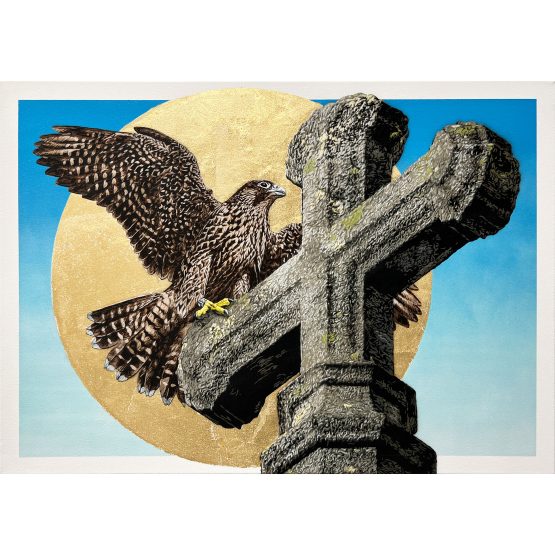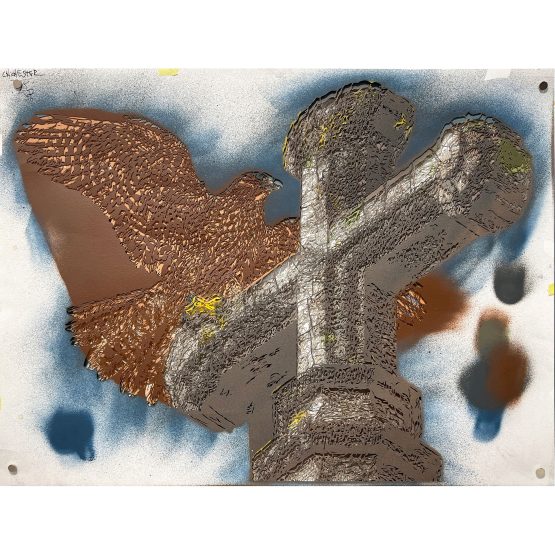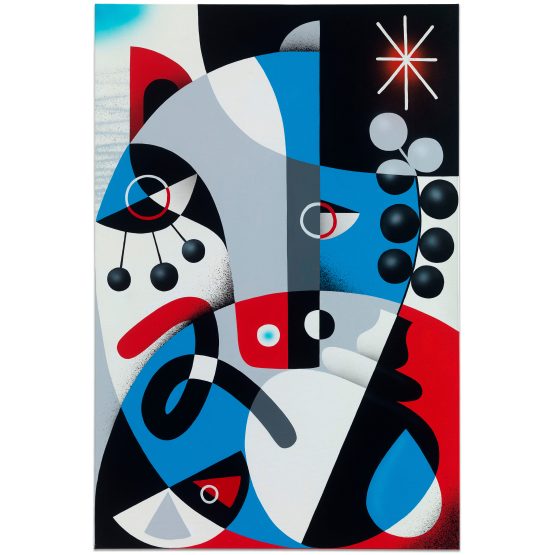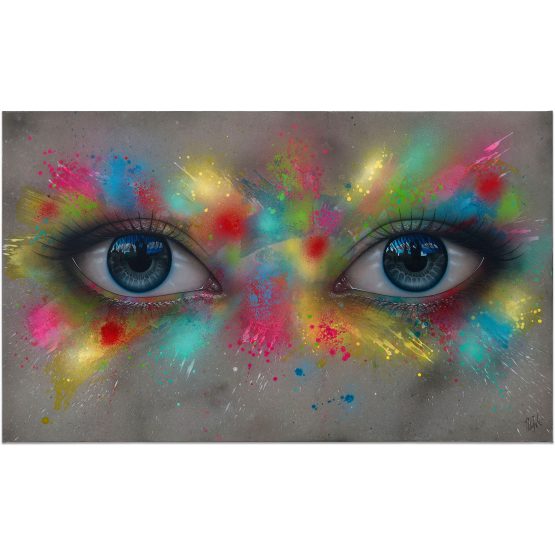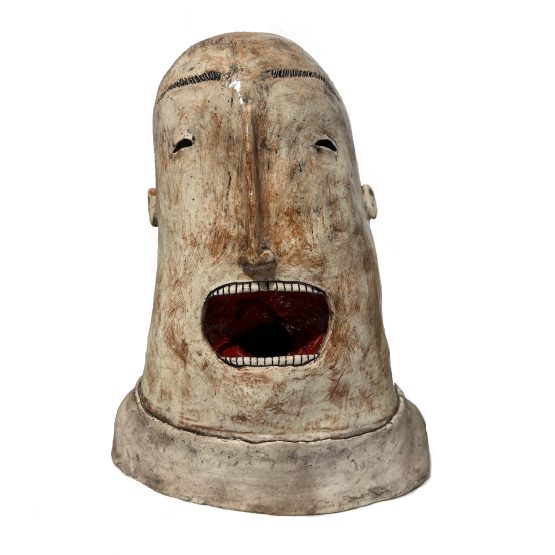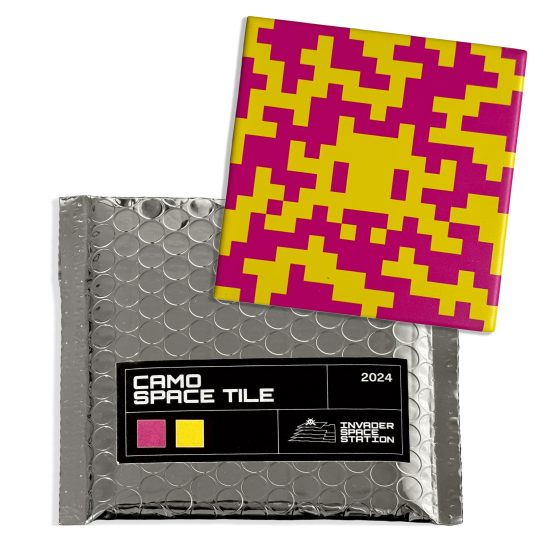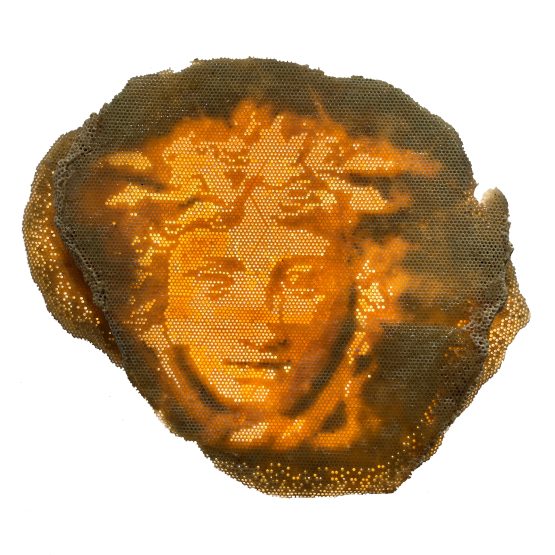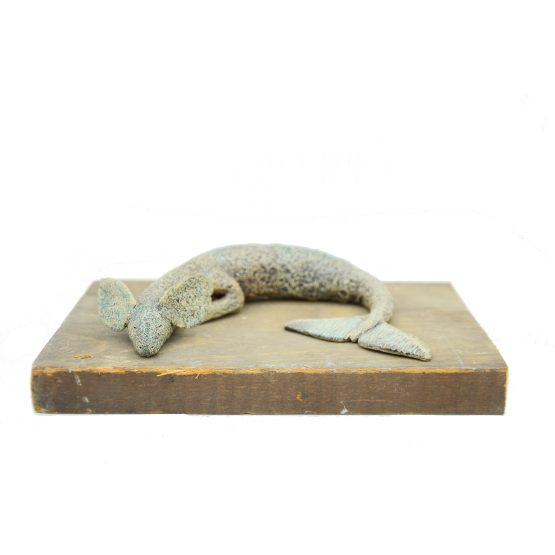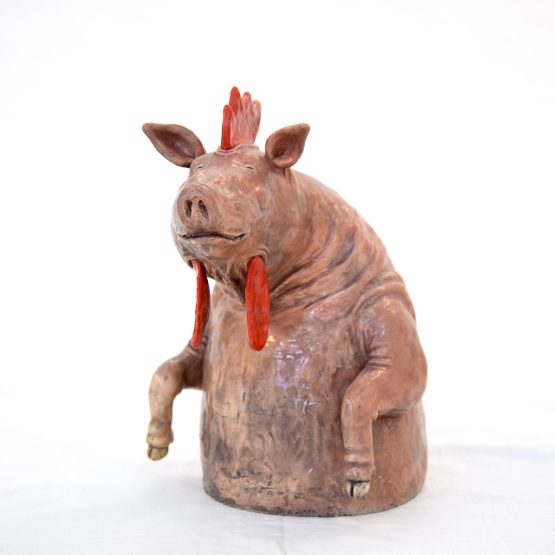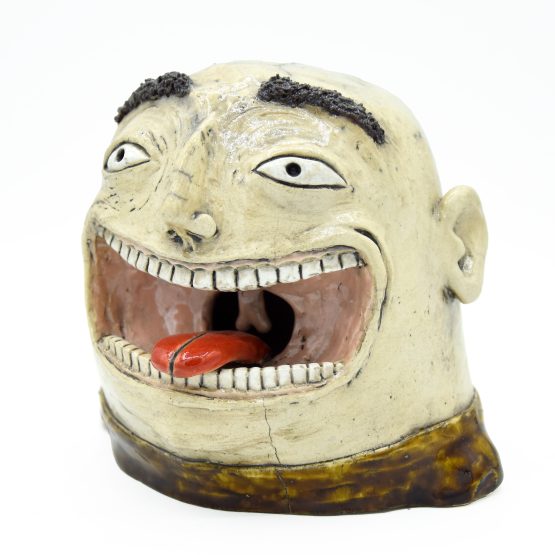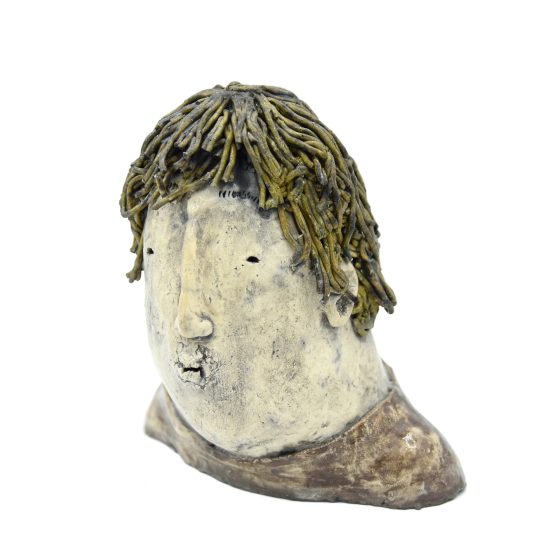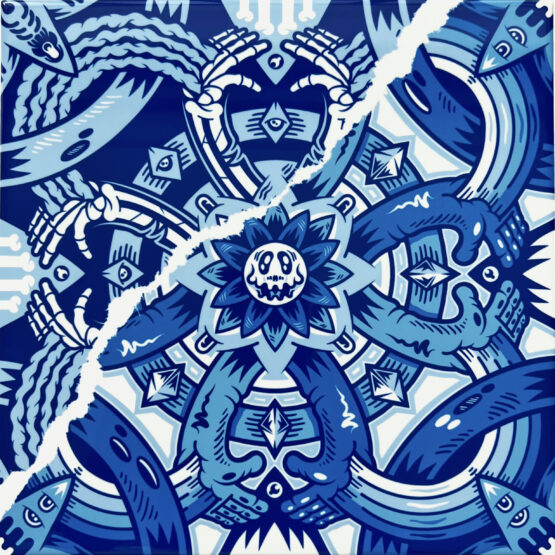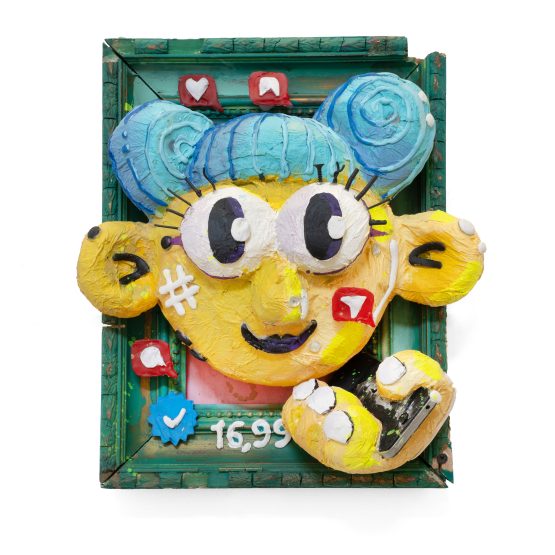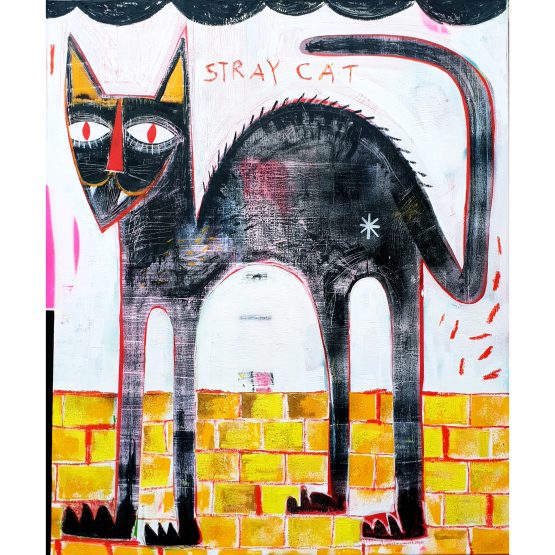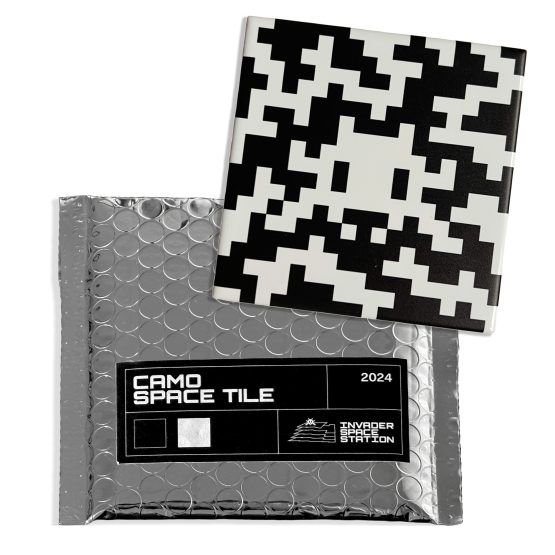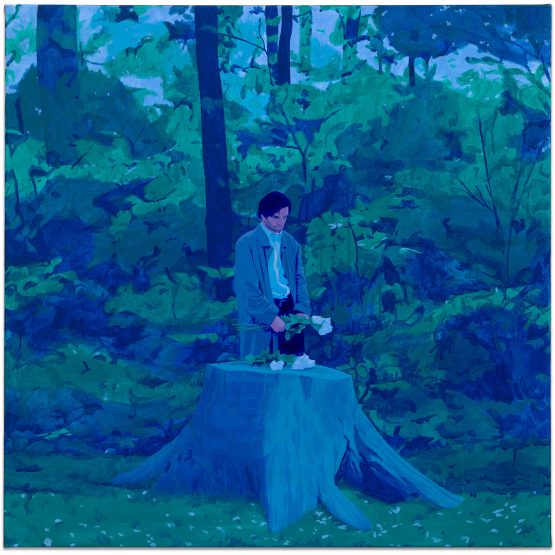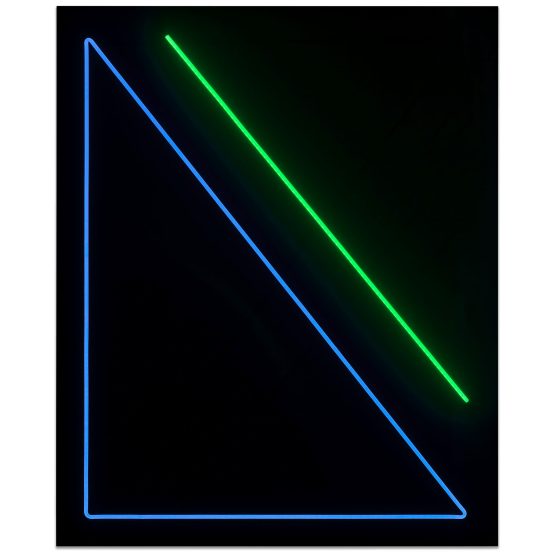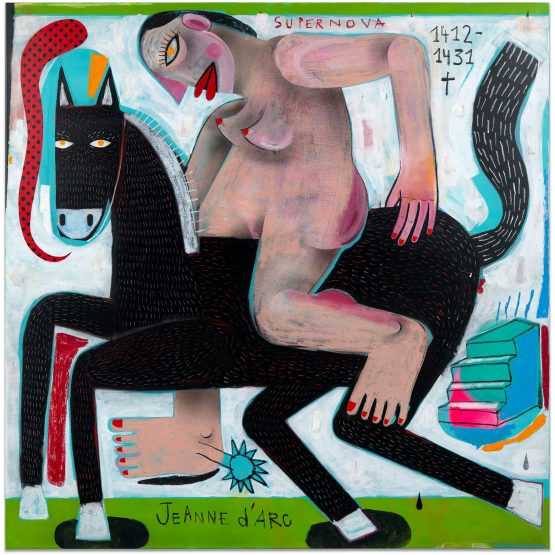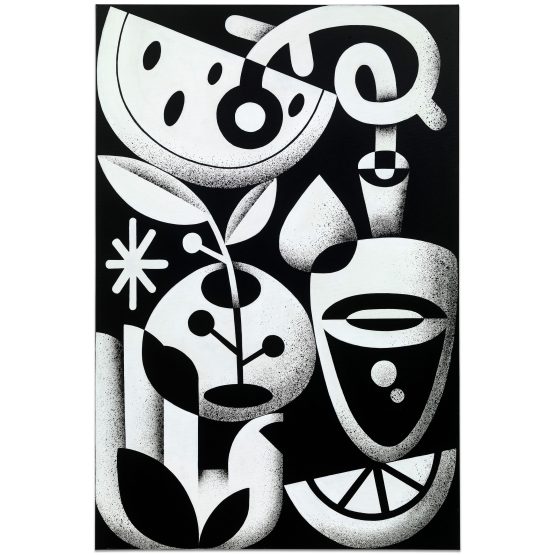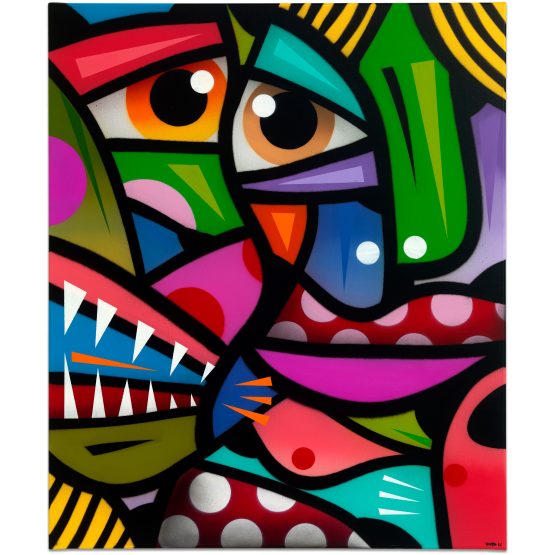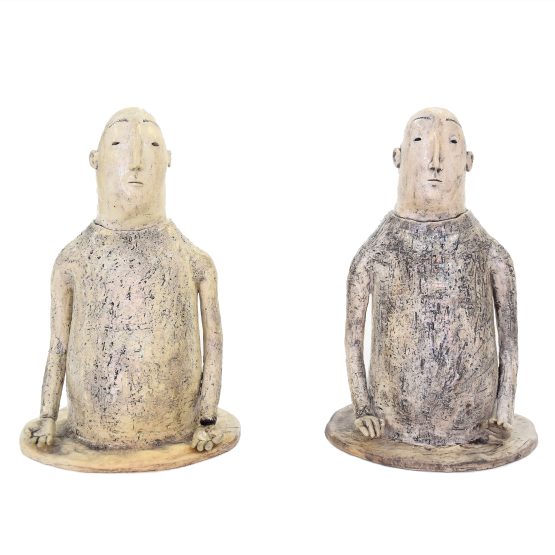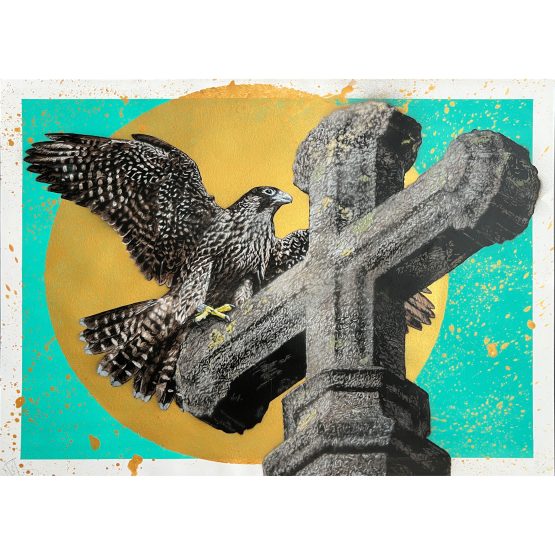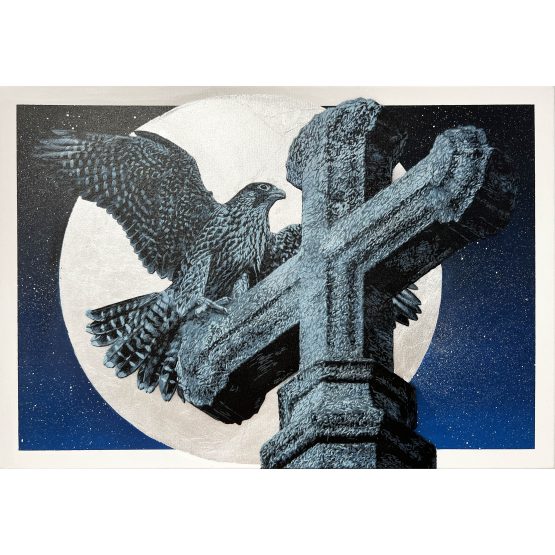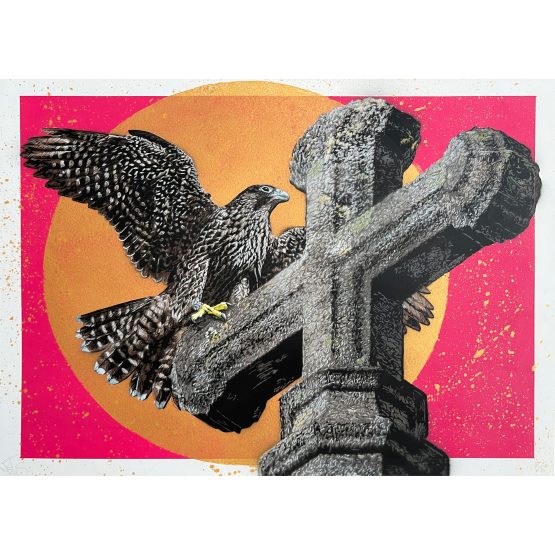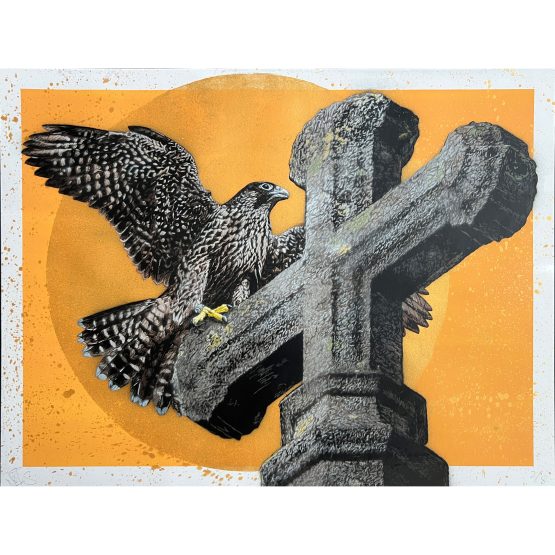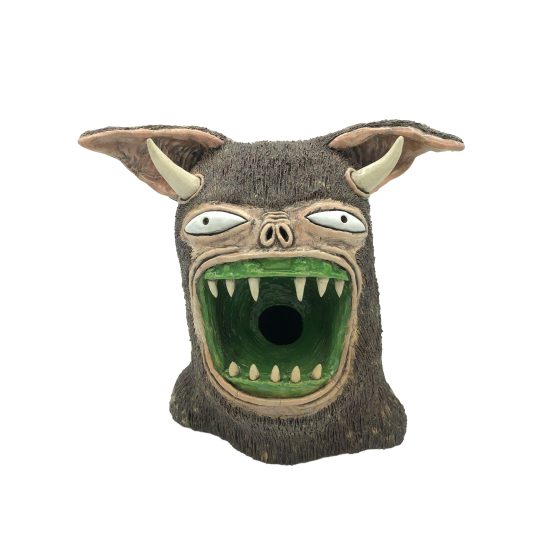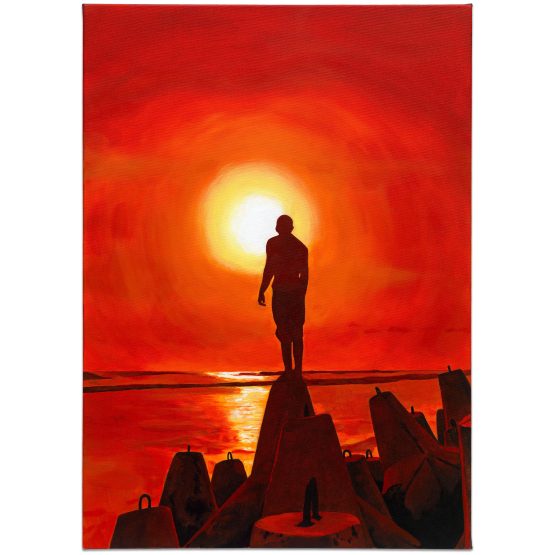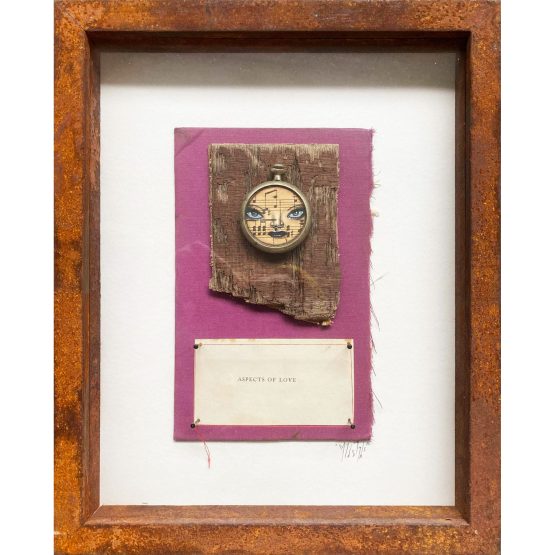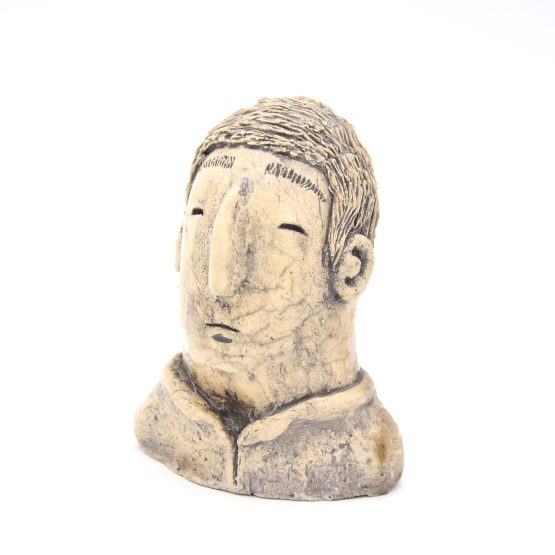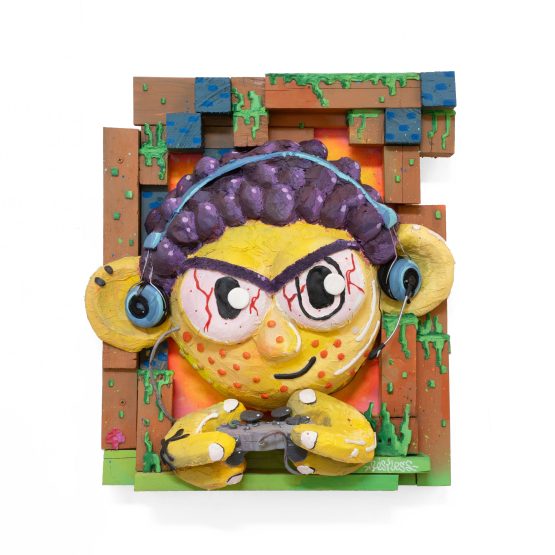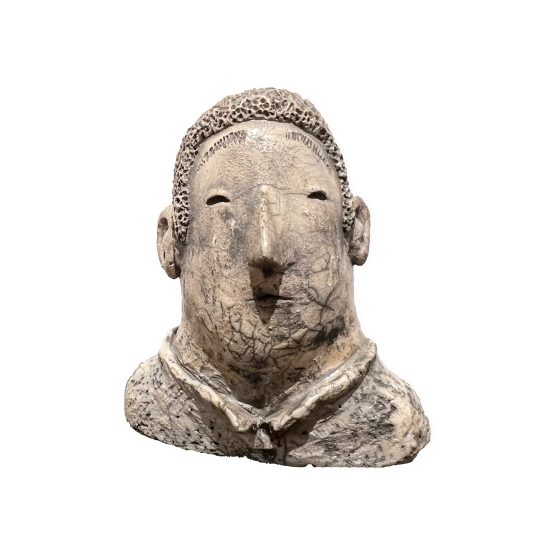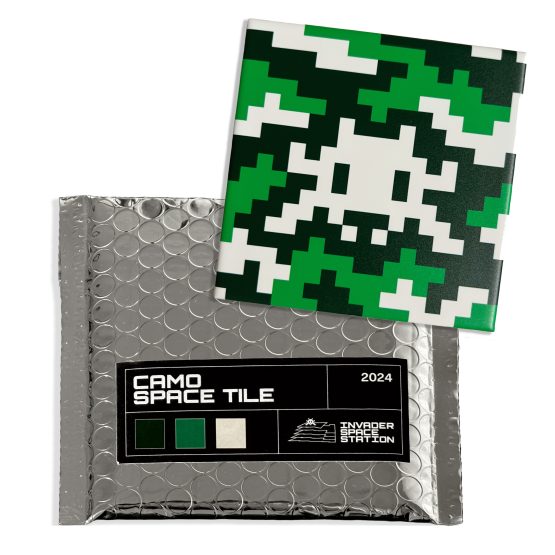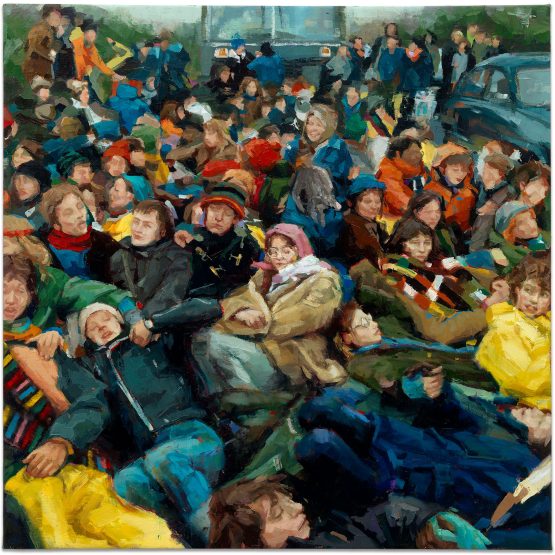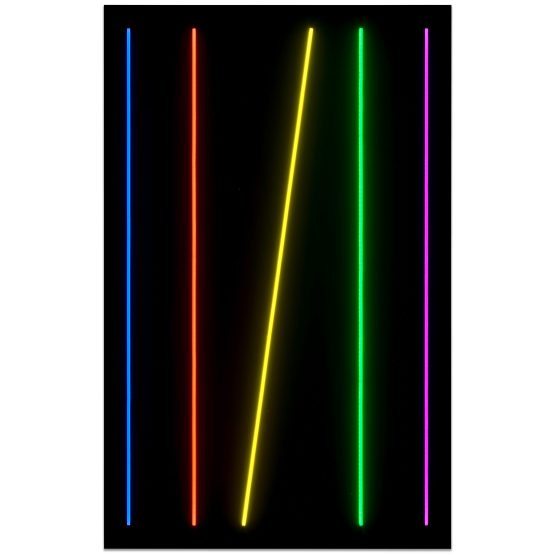During the first week of August, six Italian street artists were invited to paint on the public walls of Gerocarne, a small town in Calabria in south of Italy for the NOSTOI fest, Street Art Festival. The six artists; Giorgio Bartocci, Basik, Collettivo FX, G Loois, Luca Zamoc and Nemo, were asked to represent NOSTOI, meaning the “way back”. The festival wanted to find a physical and mental return back to the origins of the town and its traditional italian craft; the tanning and the production of terracotta.
Walking along Via Carmine, you reach a bridge which is one of the main gateways to Gerocarne’s town. On the wall next to the bridge alongside the river, Giorgio Bartocci’s was invited to paint here. The work was inspired by the river since it represents the nature’s own strength which can be modified but never stopped. The mural included the local elements from the Gerocarne area such as the fossils found within the sandy quarry. The artist spread the energy intrinsic of nature to tell us about man’s journey: the eternal return humanity is destined to. The artist transformed the colours (yellow, white, grey, black and red) of the bricks into the colours of the lifecycle’s NOSTOI.
His work is aimed to remind us of our roots, of the past times and of what generated our modern society, “the physical and psychological journey”, “the coming back to the birthplace”. The composition was conceived from a big fossil which looks still alive. It embodies thousands of scraps which seem to explode as volcanic eruptions turning into liquids and layers of new materials. These scraps are very fluid but at same time they are joint together through a mixed composition. The history of those amazing territories is enriched of the layers of different cultures and populations who lived there. Those areas are rich in raw materials and pure beauties. Nowadays these show that the “myth of progress and of economic wealth” actually led to a barbarization in those places. We should remember all the efforts which brought this cultural richness based on the respect of nature which seems to be lost nowadays.
Basik’s mural finds place on the wall in front of the town’s main square. The artist painted a hand which draws a circle within a square. The hand leaves a sign very different from the electoral one describing man’s history in a wider context, somehow metaphysic.
“To nest a circle into a square means to link two worlds very far away one from the other since the square represents the Earth while the circle represents the Sky according to a philosophical theory” Basik
Has the hand finished to draw the square or the circle first? His work reminds us of the Vitruvian man’s structure. The artist BASIK wishes to lead the audience to think about the human condition through the metaphor of the return. As the square and the circle come back to join together… like the soldier who returns to his birthplace and like the out-migrated people who come back to Southern Italy in summer holidays.
The clam stuck to the wrist represents the key element which links the local spirituality to the roots, its personal Nostoi. The shell is one of the most used symbols in the classic paint which are considered familiar with Saint Rocco, to whom the town is very tied. At the same time the shell recalls Romagna, the artist’s birthplace region. In particular, it is publicly renown that the shell is one of the signs of the northern areas close to the Adriatic Sea where the artist will come back, representing his personal Nostoi.
Collettivo FX paint ‘Attenti all’Uomo’ (Beware the Man) in the ancient suburb of the village, next to the pottery ovens. Starting from the village square, between the steep streets the artist Collettivo Fx has created an homage to the many devotees of St. Rocco, the patron who cured the plague victims followed by his dog.
It’s the dog with bread in his mouth and his bottom sticking up, simulating a game or an attitude of defiance, to represent the homage to the figure of the saint accompanied by a recommendation: trust more the animal instinct rather than the human rationality. Instead of the ancient dictum “Cave Canem” (beware of the dog), the artist recommends BEWARE OF MEN.
G Loois painted in the central square of the village, under the arches that support the council chamber of the City Hall of Gerocarne, there is a small outdoor seating area, the village’s living room, a meeting place for both adults and kids of the village.
G Loois has fragmented a portion of matter into many small asteroids, while two spectra of light, albeit dynamic shades, represent two fixed points that highlight the different points of view: one vertical and one horizontal, different but both visible from the arches that overlook the square.
Space and time seem to find a match, recalling all those people of Gerocarne that during the whole year are fragmented in different places. This changes over time as well as changes the color of the light spectrum and then, periodically, these people meet among the village streets, at the bar or in the arcades to tell and to share, and to then return each one to their own home, to their own affairs, to their own spaces, to their lives. A fixed point in space and time to where always return, Gerocarne.
Luca Zamoc’s welcoming mural can be found on one of the main roads which leads to the main square of the town runs in front of a school. Luca Zamoc placed an external decoration two-colored, yellow and red over the black background in order to welcome those people reaching the town. Recalling the decorations on the ancient portals, he painted a griffin and a sphinx on either side the wall. Between those two animal, a bull is painted standing on the top of a terracotta vase. The figure refers to the local crafts which characterises the town: the tanning and the production of terracotta.
The sphinx which holds an open book among its feet, recalls the more famous lion in Venice. In fact, it symbolizes Marco, one of the four evangelists. The symbol of Saint Marco is the lion since in his Gospel he wrote the higher number of prophecies concerning his own resurrection and the lion. Due to its strength, the lion stands for the resurrection and rebirth.
On the outside wall of a former primary school, near the terrace overlooking the village square, Nemo’s has reinterpreted the shards mountain, emblematic image for the handicraft history of the village, a once flourishing tool production in terracotta. Nowadays there are more ovens than potters, demoralized because of a disappearing tradition and crushed by new trade rules. In the upper part of the village, there are old ovens with thousands of shards piled up high forming mountains. The failed or broken pieces piled up high keep heat so the energy retained is helpful for the production of new pieces.
Today that circuit is stopped, there is no energy in the circulation and the remains are a distant reminder of the pottery production. So Nemo has reproduced and humanised those shards. Nemo is denouncing metaphorically the decadence of mankind who surrender to the state of things, adapting to its incompleteness and imperfection rather than engaging in the call into a virtuous circle that energy that can stimulate the revival not only economic but anthropological man himself.
These new murals have captured the history of Calabria and we are excited to see the next phase of artworks in this old italian town.
Photo Credit Bruno Arena










